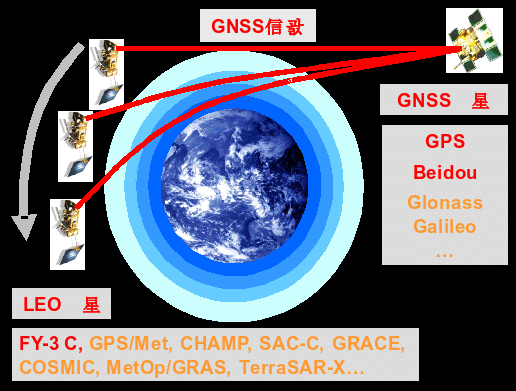Announcement
(2014.8.26)Lecture Entitled GNSS Radio Occultation for Climate Monitoring and Other Applications: What We Achieved, What’s next, and the Benefits of Cooperation
Time and Place: 9:00 am, Aug. 26, 2014, A420 Jupiter Hall on the fourth floor of the JiuZhang Building, the National Space Science Center.
Title: GNSS Radio Occultation for Climate Monitoring and Other Applications: What We Achieved, What’s next, and the Benefits of Cooperation
Lectuer:
Prof. Gottfried Kirchengast
Wegener Center for Climate and Global Change (WEGC) and Institute for Geophysics, Astrophysics, and Meteorology/Inst. of Physics, University of Graz, Graz, Austria
E-mail: gottfried.kirchengast@uni-graz.at
More Information:
Since the pioneering GNSS radio occultation (RO) mission GPS/Met in the mid-1990ties, and in particular since the start of the CHAMP multi-year dataflow by 2001, an RO data record of more than a decade has been accumulated. Formosat-3/COSMIC and GRAS on MetOp have significantly enlarged the dataset as of 2006 and also other missions such as SAC-C and GRACE have made valuable contributions. In China, a new RO data record from the FY3 operational satellite series is emerging. Now in 2014 is thus a good time to take stock to what degree we have realized the RO promise of unique climate monitoring capability due to its unique combination of high accuracy, high vertical resolution, long-term stability, and nearly all-weather global coverage.
In this seminar I will first briefly recall the characteristics of RO along these lines, in the context of related upper air observing methods and of the needs of the Global Climate Observing System, and then focus on what we achieved so far in preparing and using RO for climate science and other applications. In particular I will discuss what we have achieved in quantifying accuracy and long-term stability, and in using the data for monitoring climate variability and change in the troposphere and stratosphere, including use for detection of (anthropogenic) climate change trends.
This will clearly pinpoint both impressive successes and what’s left for next steps. A key to these next steps is to realize that despite the impressive advances no rigorous SI-trace from fundamental time to the atmospheric variables (accounting also for relevant side influences) was established so far; a promise at the heart of RO. Establishing such a processing trace first-time, in form of a reference occultation processing system with integrated uncertainty propagation, is therefore a cornerstone endeavor at the WEGC over 2011 to 2015. I will comment on its status and its prospects to provide an authoritative RO-based reference standard for climate monitoring and other weather and climate applications.
Finally, the substantial benefits of possible cooperation between WEGC Graz and NSSC Beijing, will be addressed.



